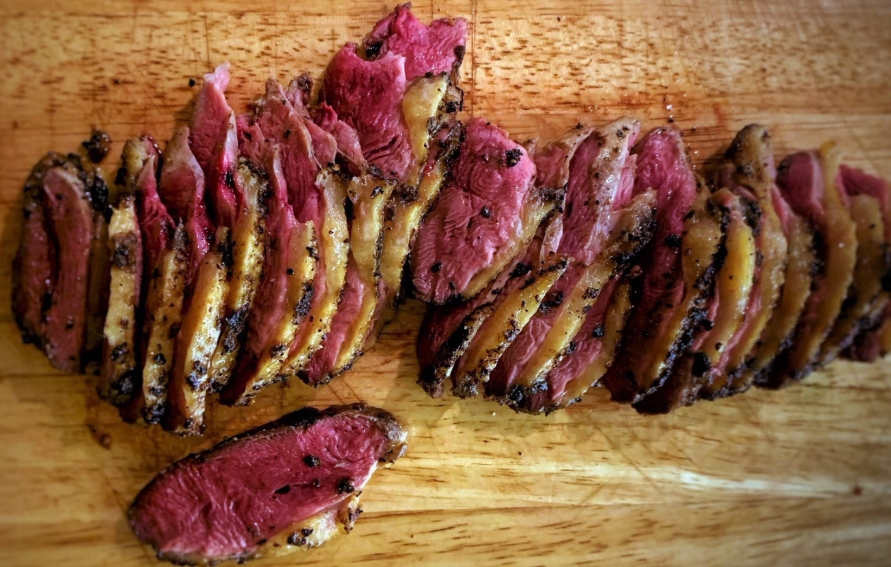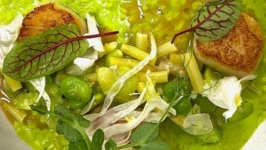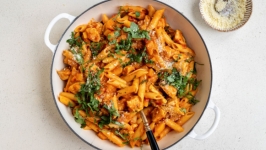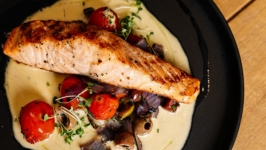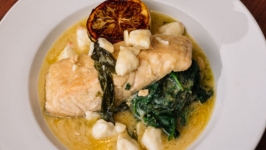Ingredients
- Duck breast, one per person
- Salt and pepper to season
- Lemon pepper - optional
- High-temp cooking oil, such as vegetable or grapeseed
- Cornstarch or flour
Instructions
Duck is less forgiving—and more rewarding—than beef or chicken, therefore attention to temperature and doneness throughout the entire cut is the key. The goal of this recipe is to produce a skin-on duck breast with a slightly crispy and browned outside which is also thoroughly cooked evenly to the center with no purple or grey meat, where the former is undercooked and the latter is a shame.
Prepare the duck
Acquire a wild duck, and pluck breast, legs, and surrounding areas. Fillet out the breasts, retaining as much skin on the breast as possible—this skin will shrink when cooked and the edges can crisp nicely. Remove legs and save for confit, and reserve the carcass for stock.
Set oven to 275°F
Bone dry skin will allow for some crisping and golden finish before the meat is overcooked. To ensure it is completely dry, pat the breasts dry with a paper towel, and prick or puncture the surface of the skin extensively with a sharp knife tip. Then salt the skin to draw out moisture, coating skin with a thick layer of cornstarch to absorb this moisture. Note—this will all be removed so don’t worry about putting on too much Let rest for 10-20 minutes.
Mix seasoning blend on a plate– sea salt and ground pepper to taste, and add a dash of optional lemon pepper (I like True Lemon Crystallized Lemon Pepper). Before seasoning, add a sprinkle of cornstarch to the skin.
To season the meat, scrape and wipe off corn starch from skin. Coat the skin with a minimal layer of high-heat cooking oil, to make the seasoning stick. Coat the breast liberally with the seasoning blend. Let rest while the pan begins to warm.
Cooking the duck
To cook the duck, be prepared for some smoke, and turn on the fans and/or open the windows. Heat 2 tablespoons oil in a medium frying pan. Bring to just shy of smoke point on high to medium heat. Then add the breasts, skin side down and slide them around periodically for about a minute to sear. Flip and sear the other side for just under a minute, and then roll on to the sides a bit to sizzle the breast completely.
Once you’ve locked in a golden sear, turn off the heat and move the duck to the oven on a pan or sheet of aluminum foil. Reserve the drippings in the pan. Insert thermometer into the middle of breasts via the side. Cook for an additional 10-15 minutes or until internal temp reaches 135° or desired doneness.
To rest the duck, pull from the oven and wrap the foil over the top to rest for 10-15 minutes. The internal temperature will rise about 10 degrees as it rests. If you don’t have a quick read thermometer, slice breast to peek inside. If needed, return to the oven to reach desired doneness.
While the duck is resting, combine butter, black cherry preserves, red wine, and salt and pepper in a quick reduction in the searing pan. Then thinly slice the duck on a cutting board, so that any shot in the breast can reveal itself. (Author’s suggestion: make sure to have one piece by itself to taste that heavenly flesh.)
Plate the duck with a drizzle of the reduction, and enjoy a meal fit for the king of tides.

